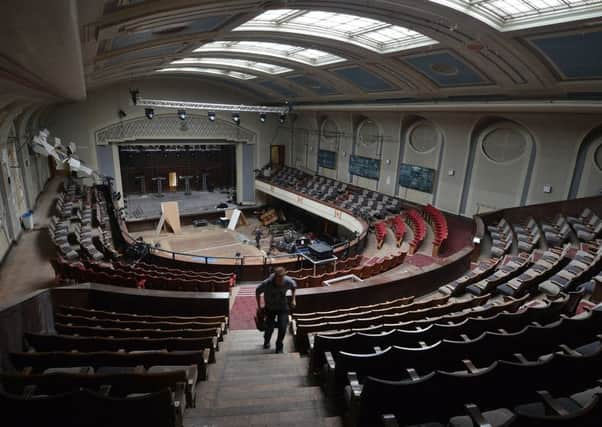Brian Ferguson: Leith Theatre is a gem of a venue


Years of doom and despair over a string of venue closures in Edinburgh have been swept away in a wave of excitement and euphoria. Out of seemingly nowhere, the city has found itself with a significant new venue, not just for gigs, but theatre and visual art too.
As soon as I heard that the old Leith Theatre was about to be used for the Hidden Door festival I had a hunch something special would unfold.
Advertisement
Hide AdAdvertisement
Hide AdNow it is being hailed by one of The Scotsman’s critics as “the best live music venue in Scotland outside of the Barrowland” and is being eyed up for other festivals and events, despite having undergone little more than an intensive clean-up before the kit for the festival was installed.
Edinburgh can pretty much stop debating the lack of a medium-sized concert venue in the city or the need to develop an equivalent to the Hydro in Glasgow. Thanks to Hidden Door, it now has both, even if it has been hidden in plain sight for the best part of 30 years.
Its rebirth after such a long period of shameful neglect has taken many by surprise – probably because it has been locked up and out of bounds for that time.
Hidden Door founder David Martin described it as “one of Edinburgh’s best kept secrets” when plans for its revival emerged six months ago.
But the small band of campaigners who have been trying to bring the building back to life have had a long struggle to get it reopened.
It was closed down by the city council in 1988 after being allowed to fall into disrepair, despite regular use by the Edinburgh International Festival. It should never be forgotten that the council wanted to sell it off in 2004 to help pay to refurbish the King’s Theatre. It was forced to back down in the face of a revolt from Leithers who knew it was gifted from the city when Leith was amalgamated into Edinburgh in 1920.
The Edinburgh International Festival has already been interested in returning in recent years. Director Fergus Linehan was among the EIF staff to check out its revival over the last ten days, praising its “truly wondrous” transformation.
Advertisement
Hide AdAdvertisement
Hide AdWhile the EIF’s return seems inevitable now, its reuse could also help persuade Fringe promoters to broaden their horizons towards Leith at long last. The Fringe Society’s move to have this week’s launch party in the neighbouring Thomas Morton Hall, also deployed for Hidden Door, is hopefully no coincidence.
Much of the Hidden Door buzz has focused on how it could plug a long-time gap in the city’s live music infrastructure. Leith Theatre has passed its initial road test with flying colours.
Many of those I spoke to at Hidden Door believed it was vital that little is done to the building to ensure it is flexible for as wide a range of events as possible. But there is a pressing need to address a basic shortage of backstage facilities, power supplies, toilets, lifts, heating and lighting.
The Leith Theatre Trust, which has a five-year lease with the council, now needs as much help as possible, in terms of both expertise and finance, to help realise its full potential and secure its long-term future.
Although the council owes it to Leith to do all it can to help these efforts, other backing will be needed – and there is no reason why Leith Theatre should not get it.